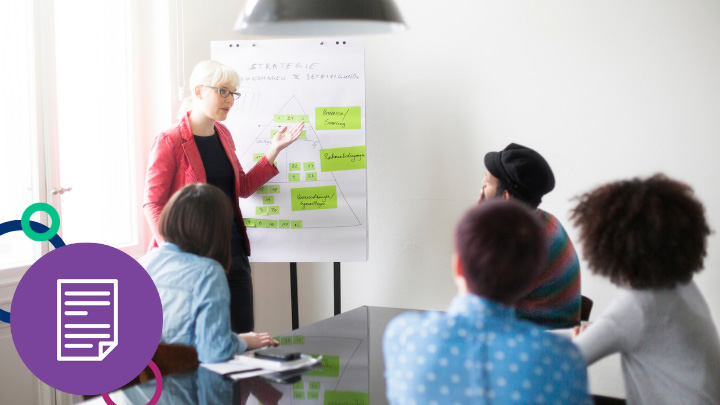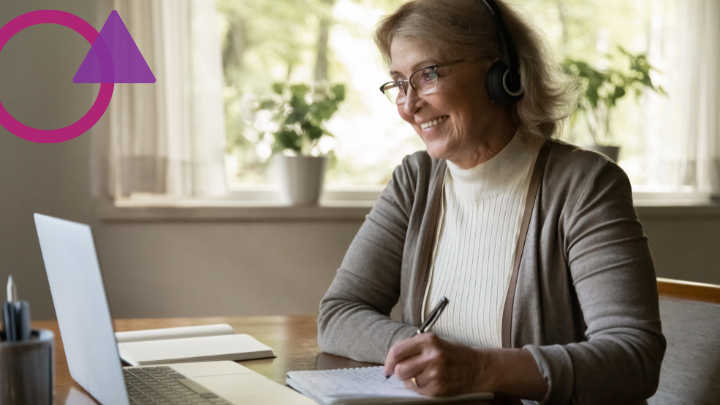This is the sixth and final blog in our Newsela student-centered literacy blog series. You can find the previous installment here.
Many school administrators find themselves drawn to leadership positions because they have a true passion for curriculum, instruction, and transformative change. However, upon landing a campus-based administrative role, many leaders find themselves stuck in the monotony of managerial tasks: facilities issues, personnel matters, and student discipline. It takes conscious commitment and a strategic plan to keep curriculum and instruction at the forefront of the job.
A mere focus on curriculum and instruction, though, isn’t enough. Good leaders know building culture and teacher efficacy requires modeling the things that are important while building relationships and trust with staff. One excellent way to accomplish these goals is through guest teaching.
Why Guest Teaching?
Recently, I shifted from serving as Dean of Instruction at a large high school to an Assistant Principal at a high school in another state. I found myself quickly missing the focus on instruction that I’d had in my previous position; obviously, instruction was still a primary focus for me, but it wasn’t the same as when it had been my ONLY focus. Additionally, as I was in a new school, I found that the majority of my interactions with students were punitive and disciplinary in nature. I didn’t like that! I knew to change behavior, I needed to form relationships with kids, not just punish them after someone else sent them my way. So, I chose to guest teach in an English teacher’s classroom. This afforded me the best of both worlds: it helped me stay rooted in instruction, and it helped me to forge connections with students. It also helped me establish myself on the campus and get to know the teaching staff on a different level as we talked about lessons and strategies.
Guest teaching, specifically in the literacy classroom, can accomplish so many goals of leadership and reinforce an administrator’s credibility. Teachers sometimes grow skeptical of school leaders who have been out of the classroom for a long time, assuming their skillset has waned, or they’re out of touch with the demands of the classroom. Guest teaching provides leaders an opportunity to stay current on instructional practices, coach teachers on strategies that work, and stay abreast of the struggles that teachers face in the classroom. Similarly, when school leaders plan with teachers for a guest lesson, it allows them to collaborate with teachers differently—as peers with a common goal—building relational capacity and trust.
Similarly, guest teaching allows administrators and school leaders a unique opportunity to connect with students. When administrators are involved in a lesson with students, they get to see a different side of students than they might see in the office. Similarly, students get to see a different side of their administrators; in the classroom, administrators who are “guest teaching” can let their personality and passion shine through to students in a way that is not easily done at lunch duty or in the bus parking lot. These interactions lay the groundwork for future conversations and reinforce positive relationships.
How to Start Guest Teaching
Embarking on a “guest teaching” adventure can be intimidating for administrators, though, so here are some things to consider as you move forward.
1. First impressions matter!
For your first guest teaching experience, with credibility, and results in mind, partner with a teacher whose subject area you’re familiar with. For your very first lesson, if you taught high school English, it’s probably not ideal to jump right into an AP Physics classroom.
After you’ve experienced some success in a very familiar content area, branch out to other areas. Consider how you can bring your classroom experience into a different discipline. For example, if you did teach English, consider how you can bring a close reading analysis or constructed response lesson into that AP Physics class. Additionally, administrators will make themselves more well-rounded and well-versed in the curriculum when they analyze data to co-plan a lesson with a teacher. Let the teacher be the expert on the content, and the administrator provides co-planning support on data analysis and strategies.
2. Teach mini-lessons.
Devoting an entire class period or portion of a day to guest teaching can be unrealistic with the other demands of the job. It can be helpful to choose a “mini-lesson” or topic to teach. This approach creates powerful planning opportunities with teachers as you work to mesh the mini-lesson with the broader scope of the unit. For example, during the Newsela Master Teacher Project, I guest taught a lesson on Mentor Texts for Argumentative Writing. This lesson supported teachers and students in understanding how to improve their argumentative writing skills, serving as a foundation for teachers to refer back to during the rest of the unit.
3. Do your research.
The best lesson you taught in the classroom may not be relevant to today’s students. Use what you know from conducting Learning Walks classroom walkthroughs on your campus to select and use engaging strategies. On a recent learning walk, I noticed that students were not grasping content-specific vocabulary. So, I worked with the teacher to develop a mini-lesson around using vocabulary games to review vocabulary terms. We looked closely at Sort and Categorize Vocabulary and decided to use it to build students’ vocabulary skills.
4. Incorporate the initiatives of your campus.
If your campus has a literacy goal or initiative, be sure to find ways to bring literacy into the content areas as you guest teach. If your campus is focusing on technology, be sure to integrate technology and model what’s important.
5. Follow up with students after the lesson.
Remind students that you enjoyed your time with them. Ask follow-up questions as you see them in the hall about the lesson, what came next, etc.
6. Follow up with teachers after the lesson.
Ask some casual questions about how the rest of the lesson or unit went, and then dig deeper to analyze data with teachers. Assess student work from the lesson to pinpoint specific areas for growth and personalized learning. Administrators who have access to Newsela PRO can use the Newsela Binder as a springboard for discussion and data analysis. With teachers, leaders might even consider using a Debriefing Protocol to focus on future results.
7. Celebrate!
Be sure to celebrate successes/experiences with students and teachers. Specific positive reinforcement has positive effects on student learning, and it can be even more profound when it’s coming from the Principal! Last school year, I wrote a thank you note to a student who stepped out of her comfort zone and shared in a way that was out of character for her during one of my guest teaching lessons. I thanked her for her being bold, being brave, and for responding well to me as the guest teacher. At the beginning of this school year, she showed me that she still had the note kept in the front pocket of her binder and that it helps her to be brave in her classes. As important as it is to celebrate with the students and teacher of the class, it’s equally as important to share your experience with other teachers. This can go a long way to improve morale and collaboration on campus while also reinforcing that engaging, results-oriented instruction is the campus’s goal.
When school administrators and leaders carve time out of their busy schedules to guest teach in classrooms, the positive results can be felt almost immediately. Teachers feel connected to their leaders by working collaboratively on a lesson, students feel important and recognized, and all parties have a deeper understanding of what is important for the school.







